Roasted Tomato Risotto is a simple plant based meal which showcases the humble tomato at its best. Get the recipe below.
Plant based Italian recipes
When people think of Italian cuisine they often think of pasta but it's certainly not all Italy has to offer. In the 14th century rice found it's way to Sicily and it turns out that the Italian climate was perfect for growing short-grain varieties. Ever since, rice has been an important part of Italian cuisine. I love Italian food and since going vegetarian (and subsequently vegan) Italian food regularly appears on our meal plan. Today I'm sharing with you a simple rice based dish called Roasted Tomato Risotto.
If you want to see more of my Italian inspired recipes then head to the Italian recipe archive now!
Risotto is a rice dish made specifically from ‘risotto rice’. The specific variety is known as Arborio (or Carnaroli) rice. The rice is cooked slowly in pan of shallow liquid (usually stock) that is added in small increments so that the rice can soak it up between additions. Traditionally risotto is vegetarian (though it will occasionally include sausage meat).
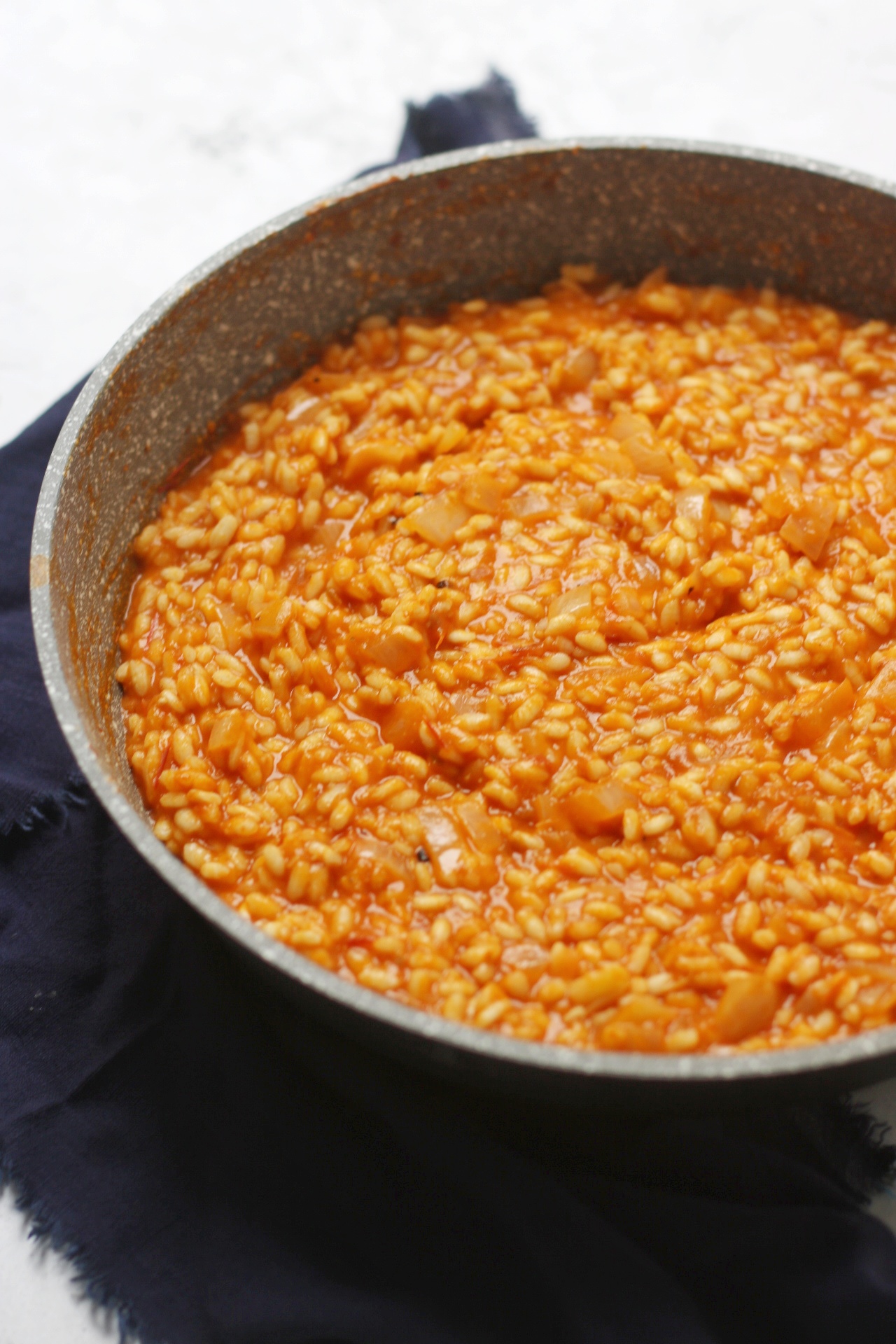
How to make risotto
If you've heard that risottos are hard to make, and daunted by the prospect, then stop worrying immediately. Here I'll walk through the steps in simple terms so you can see just how easy they are to make, once you know how.
Choosing the right rice
You can't make risotto with any old rice. For the best risotto you want to use a variety of rice that’s short- to medium-grain in size, is round and plump, and has a high starch content. The most common variety to use (at least outside of Italy) is Arborio.
If you can get hold of it, carnaroli rice is referred to as the “king” or “caviar” of risotto rice. It makes a really creamy risotto and each grain of rice keeps its shape perfectly.
Sweating your onions
The first step to making any risotto (not just this Roasted Tomato Risotto) is to sweat diced shallots or onion in oil. Sweating the onions takes 8 - 10 minutes. Don't be tempted to try and shorten this time period. You want the onions to be soft and translucent before you move on to the next step.
Toasting your rice
Once the onions have begun to soften now is time to add the rice to the oil. This step doesn't take long and it can be tempted to skip it. But, toasting the rice creates a shell around each grain. This allows the grain to slowly absorb the stock we are about to add without getting soggy (or worst, bursting!)
Adding your stock
I like to add white wine - or even better vermouth - to my risotto as is traditional. Traditionally the wine is added first, followed by warm stock. The stock should be kept warm as this will make sure there is no drop in temperature each time it is added, we want the dish to cook consistently and evenly.
In this recipe we also have the toasted tomato juice to add to the dish. We do this before both the wine and the stock.
Whatever liquid you are adding to the dish, it is important that this is added in small quantities and fully absorbed before adding more. We add stock slowly so that the risotto isn't swimming in liquid. You want it to gently simmer, the bubbles of steam making the grains of rich bump up against each other gently, releasing their starch.

Stirring your risotto
Lots of people get worried about how often they should be stirring their risotto. Should you leave a risotto to absorb the liquid without stirring? Or should you stir your risotto regularly? If you Google "how often should you stir your risotto" you get the answer every 30 seconds. But don't worry, I'm not going to suggest you set a timer.
The important thing to understand is why we stir risotto, what happens if you stir too often and what happens if you don't stir often enough. Let's start with the latter.
What happens if I don't stir my risotto enough?
If you leave your risotto alone too long, you risk the liquid being absorbed, the rice sticking to the bottom of the pan and ultimately burning. No one wants burnt risotto.
What happens if I stir risotto too often?
Constantly stirring risotto will create a gluey, sticky, stodgy mess. Stirring does two things, releases starch and adds in air. Whilst we want a little bit of starch released, too much will ruin the meal.
What happens if you stir the risotto the perfect amount?
Well you have the perfect dish of course!
Adding dairy (substitutes)
Once all the stock has been absorbed, traditionally you would add butter and Parmesan cheese. If your'e vegetarian then go on right ahead. If you're vegan like me then reach for your favourite vegan butter and Parmesan substitutes.
If you can't find vegan Parmesan in the store then don't worry, I show you how to make your own here.
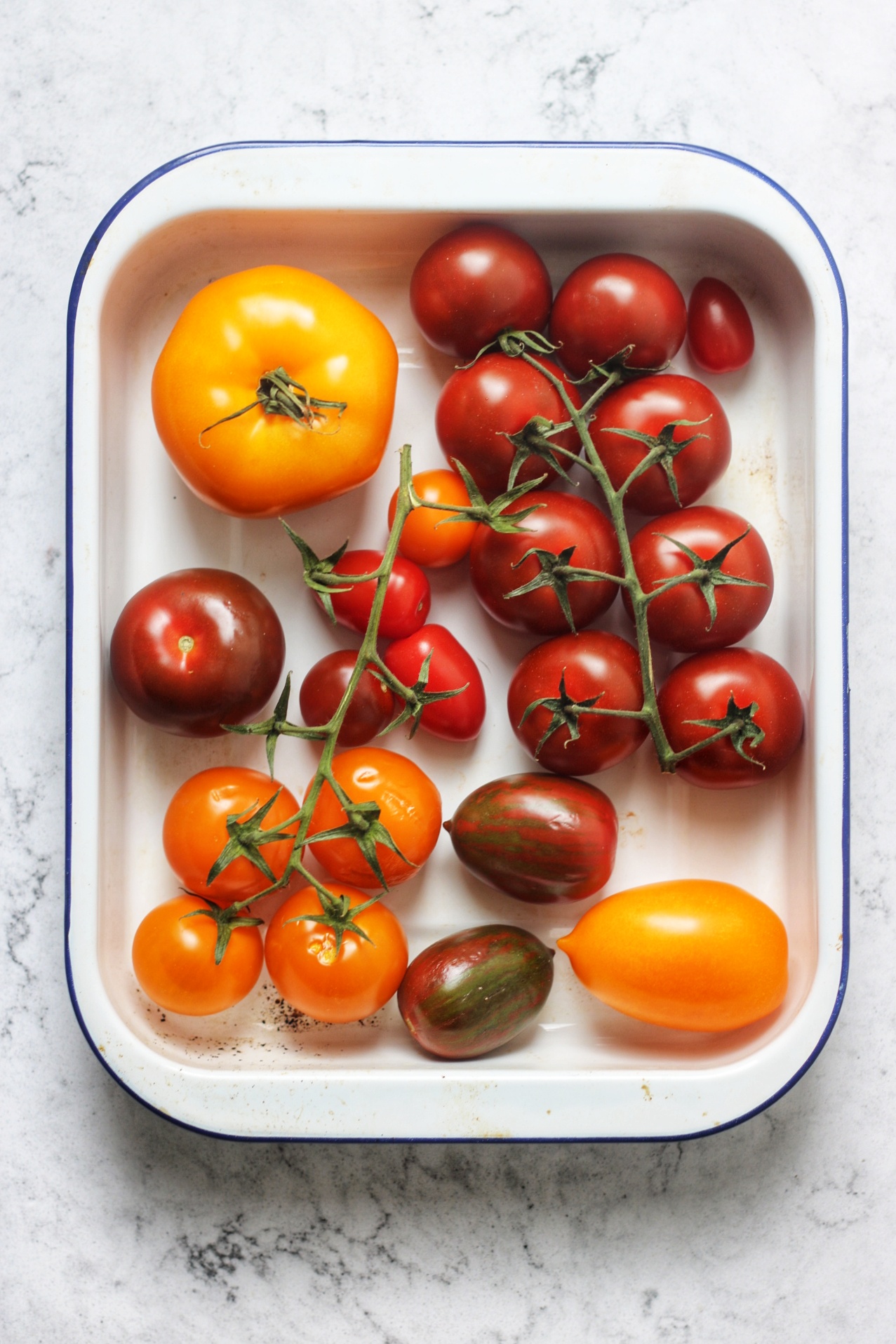
Roasted Tomato Risotto
We have focused a lot on how to make any old risotto but this recipe is special. It's a real showcase of one of my favourite ingredients: tomatoes. When you're making just one ingredient the star of a dish you really need to buy the best quality you can.
The tomatoes you will find in the supermarket UK are usually watery, tasteless and can sometimes have a horrible sandy texture. I much prefer to grow heritage varieties at home and this is a great recipe for those years where I have a glut. When I don't have tomato plants in my garden, I buy from The Tomato Stall who grow their tomatoes in the sunny Isle of Wight. If you want to give them a try you can use my referral link and we will both get 10% off when you make your first purchase.
By roasting our tomatoes before adding them to the recipe, we enhance their flavour even more. The roasting processes reduces liquid and makes the flavour more intense and concentrated, sweeter even. It's a great way of packing more of the tomato goodness into every bite.
To finish off this recipe I like to keep a few of the roasted tomatoes aside and add them once I've plated up. It's not only pretty but you get the texture of the roasted tomatoes too.
The recipe
Enough chat, let's cook!
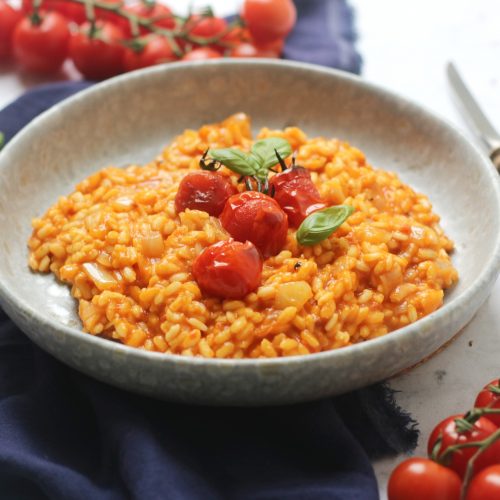
Roasted Tomato Risotto
Ingredients
For the roasted tomatoes
- 2 teaspoon olive oil
- 4 cloves garlic
- 450 grams tomatoes
- salt and pepper
For the risotto
- 1 white onion
- 250 grams arborio rice
- 75 ml white wine or dry vermouth
- 500 ml vegetable stock
- 2 tablespoon sun dried tomato puree
- 2 tablespoon vegan parmesan
- basil
Instructions
- Pre-heat your oven to 200C / 392F / gas mark 6.
- Place the tomatoes in a roasting tin with the garlic cloves; drizzle with the olive oil and season with salt and pepper.
- Place the roasting tin in the centre of the oven and roast for 45 minutes or until the skins have blistered and the tomatoes are bursting.
- Remove the tomatoes and garlic from the oven and let them cool slightly before adding to a blender and blitzing until smooth.
- Place the tomato liquid in a sauce pan with the vegetable stock, stir well and place on a low heat to keep warm.
- Add the remaining olive oil to a flat bottomed pan and place on a medium heat.
- Sweat the onions in the pan with a pinch of salt for 8-10 minutes or until they are soft and translucent.
- Add the rice to the pan and toast it for 1-2 minutes before pouring in the wine.
- Let the wine summer until it has been absorbed by the rice.
- Spoon in 2 or 3 ladles worth of the warm tomato and vegetable stock and again let it simmer until completely absorbed, stirring occasionally.
- Keep adding just one ladle of the tomato liquid and stock at a time, stirring until almost completely absorbed by the rice. Continue this until all of the stock is gone and the rice is tender but not mushy.
- Once the rice is cooked, turn off the heat and stir through the vegan parmesan.
- Taste the risotto to see if it needs seasoning.
- Serve with a few basil leaves and more roasted tomatoes if you wish.
Nutrition
More tomato recipes
If you want more recipes where tomatoes are the star then try these recipes.
Taste the sunshine
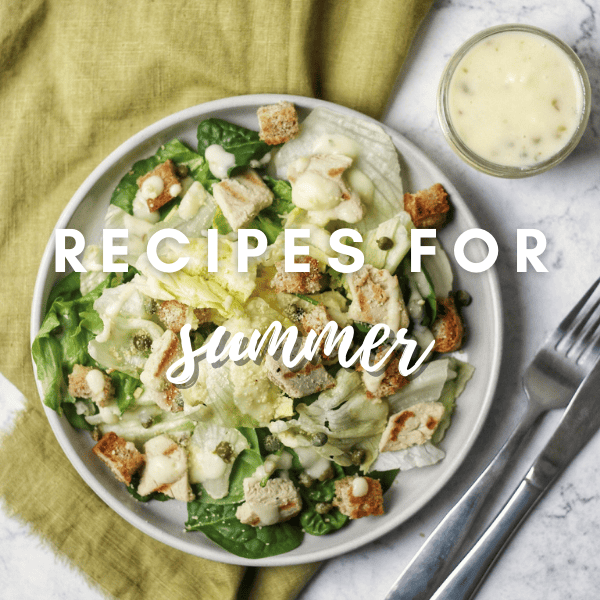
Check out the summer recipe archive for all the recipes you need for picnics, BBQs and making the most of summer produce.


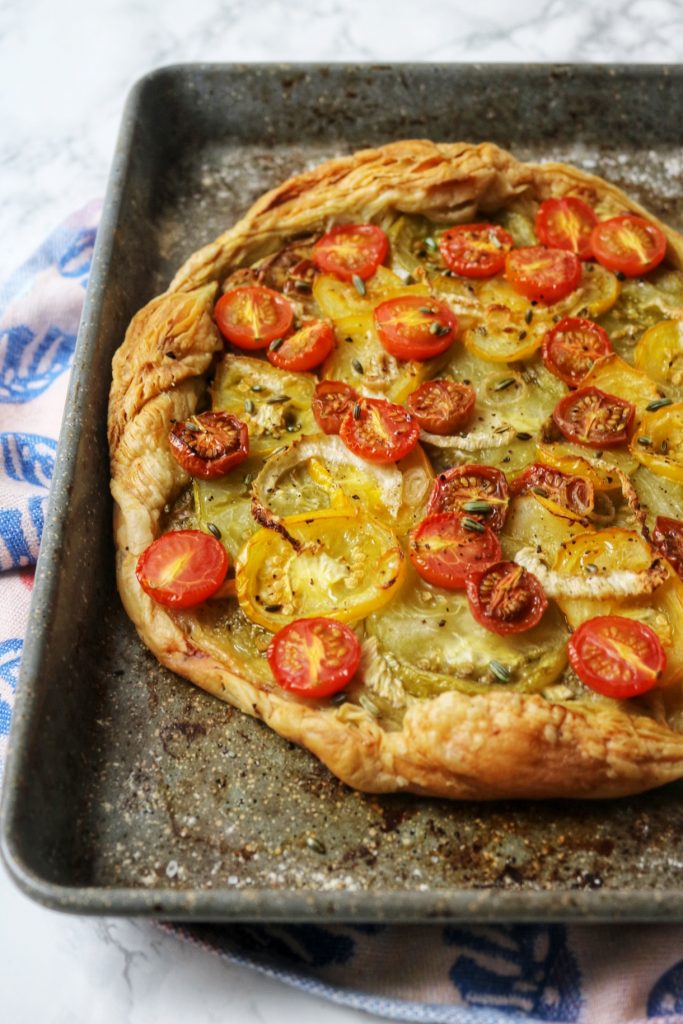






Leave a Reply